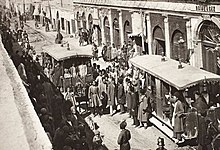
Andimeshk is a city and capital of Andimeshk County, Khuzestan Province,Iran.
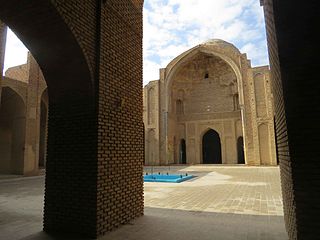
Varamin is a city in the Central District of Varamin County, Tehran province, Iran, and serves as capital of the county.

MAPNA Group is a group of Iranian companies involved in development and execution of thermal and renewable power plants, oil & gas, railway transportation and other industrial projects as well as manufacturing main equipment including gas and steam turbines, electrical generator, turbine blade and vane, HRSG and conventional boilers, electric and control systems, gas compressor, locomotive and other pertinent equipment.

Nasser Pourpirar was a famous Iranian writer and historical revisionist. He was known for his controversial theories questioning the academically recognized historiography of Iran from Achaemenids to the beginning of the Safavid period.

The Persian legislative election of 1923 was held in November 1923 after the appointment of Reza Pahlavi as Prime Minister by Ahmad Shah Qajar. It was the last election in the Qajar dynasty. Parliament opened on 11 February 1924.
Rahimkhan Chalabianloo or Rahim Khan Chalabianlu, was a Kurdish government official in power around the turn of the 19th century in Iran. He was from the Chalabianlu tribe and executed in 1911.
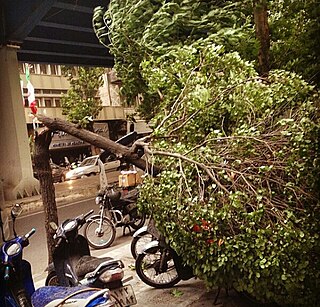
A massive dust storm took place in Tehran on June 2, 2014 at 4:50pm. 5 men were killed, more than 30 people were injured, and a few cars were destroyed. Falling trees and objects in balconies disconnected 65 of 1200 electric 20 KW lines.
The City of Firsts or City of Pioneers is an unofficial motto for Tabriz, a major city and provincial capital in north west of Iran. The motto is given because of the pioneering role of the city in modernization signs in Iran and its leading role in movement toward the formation of modern Iran.

Javan Mard-e Ghassab Tomb is a building in Shahr-e Ray located in south of Tehran. The building dates back to the ruling era of Fath-Ali Shah Qajar. Javan Mard-e Ghassab is a semi-imaginary and semi-historic character whose name means 'chivalrous butcher'. The texts on the gravestone in the tomb show that it is the same old butcher considered legendary class. Javanmard-e-Ghassab Metro Station is located near the tomb.
Saints Thaddeus and Bartholomew Church of Tehran,, is an Armenian Apostolic church in Tehran, Iran. It is the oldest church in Tehran.
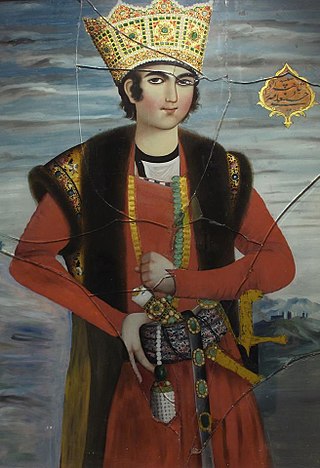
Hossein Ali Mirza, a son of Fath-Ali Shah, was the Governor of Fars and pretender to the throne of Qajar Iran.
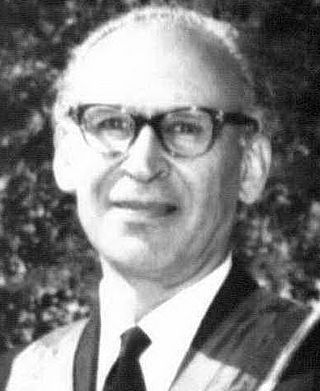
Mehdi Bayani was the founder and the first head of the National Library of Iran, specialist in Persian manuscripts and calligraphy, writer, researcher, and professor at the University of Tehran.

The Isfahan Seminary is one of the oldest seminaries in Isfahan, Iran. Currently, more than 40 schools in Isfahan province are under the supervision of the Management Center of Isfahan Seminary and the leadership of the supreme authority of Grand Ayatollah Hossein Mazaheri.

Shahab Moradi, is an Iranian clergyman, preacher, and university lecturer. He has appeared in different programs on Islamic Republic of Iran Broadcasting as an expert since 2000.

The Time Museum or the Hossein Khodadad House is a museum in Tehran, Iran. The museum specializes in clocks and other time-measuring devices.

The United States Cultural Diplomacy in Iran refers to the use of soft power of cultural diplomacy by the US government towards Iran in order to achieve its own interests.
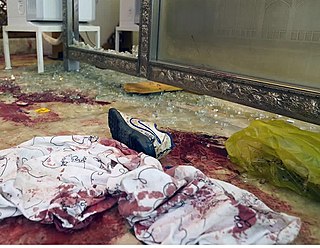
The Shah Cheragh attack was a terrorist attack that occurred on 26 October 2022 at Shah Cheragh mosque, a Shia pilgrimage site in Shiraz in southern Iran, in which at least 13 people were killed.
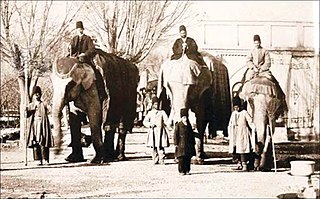
Lalehzar Zoo, was the first modern zoo of Iran situated in Tehran, which was established at the time of Fath-Ali Shah Qajar, and was expanded to a full functioning zoo by Naser al-Din Shah around 1850 CE.
